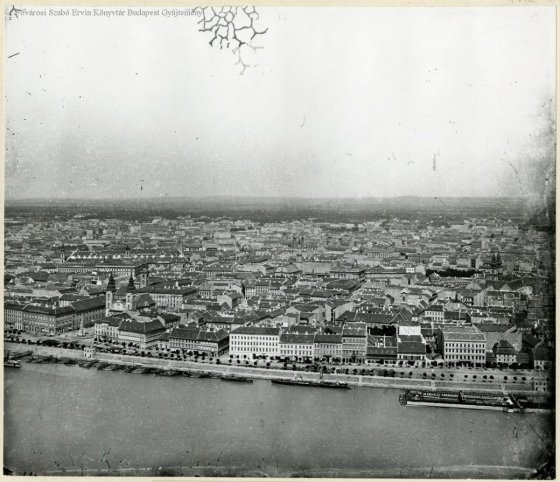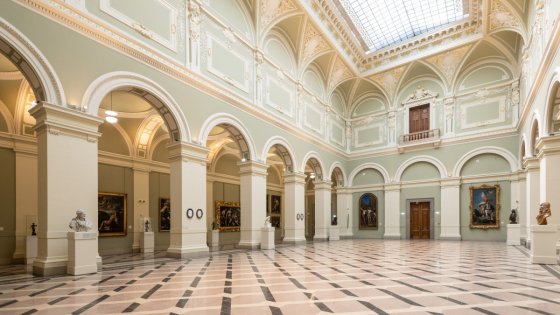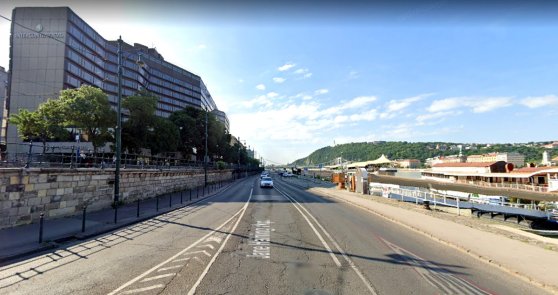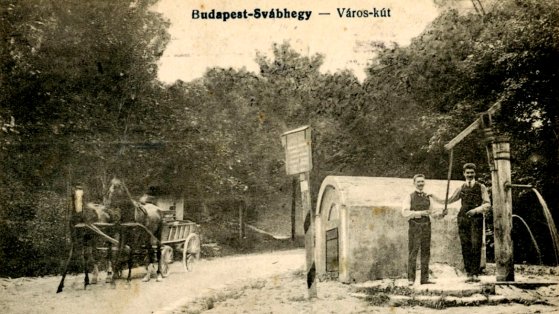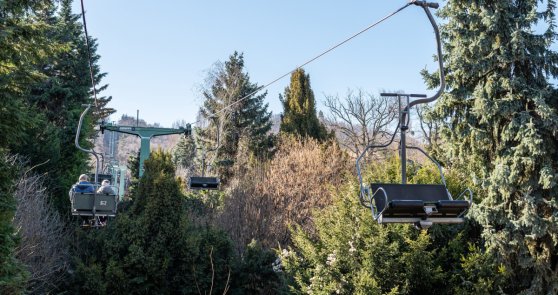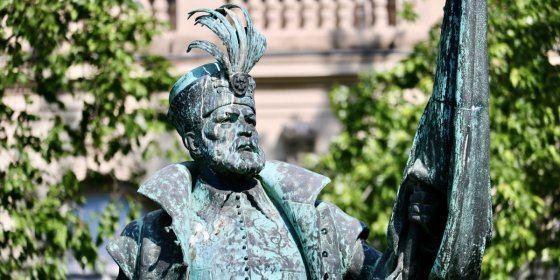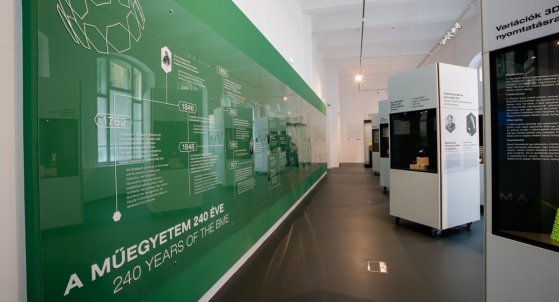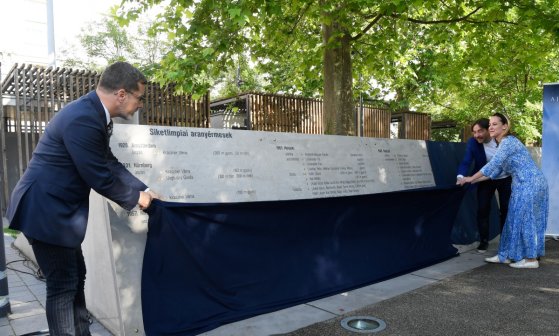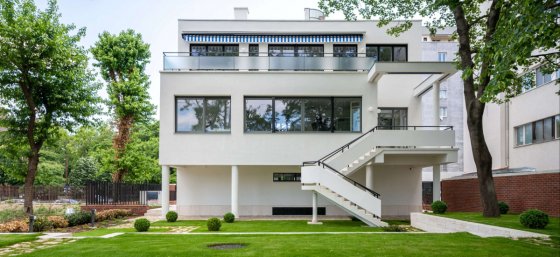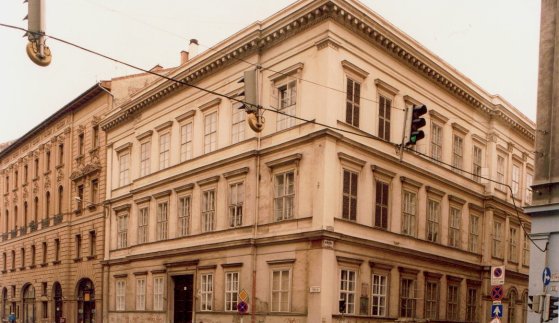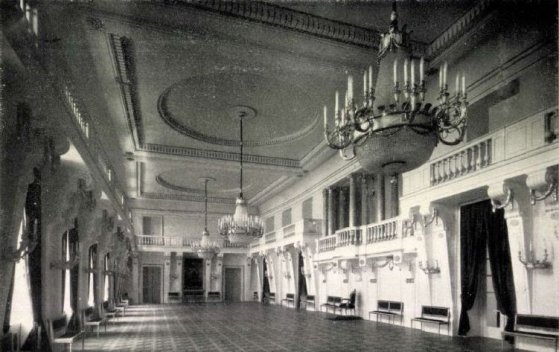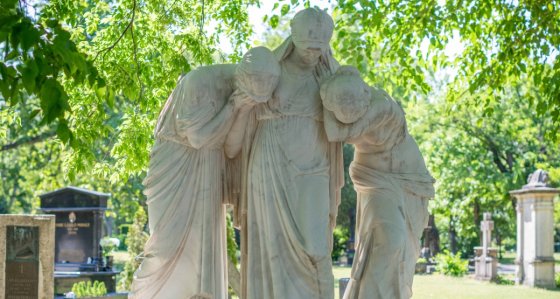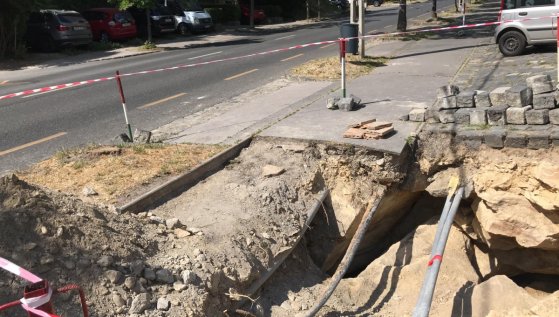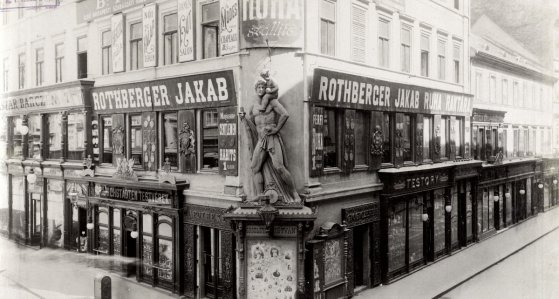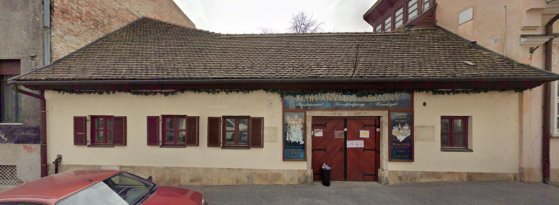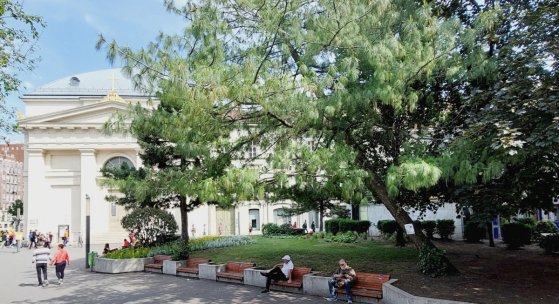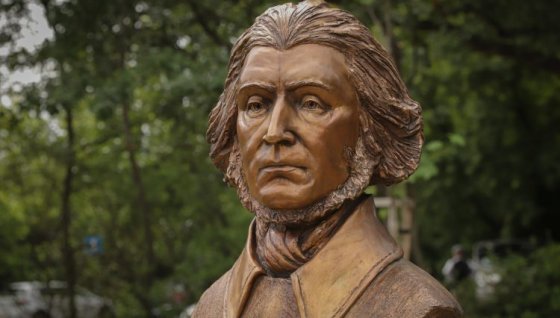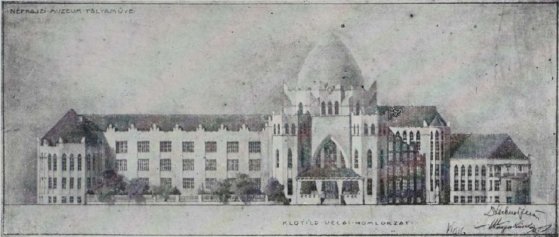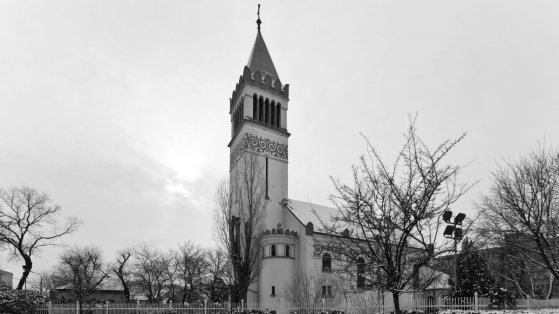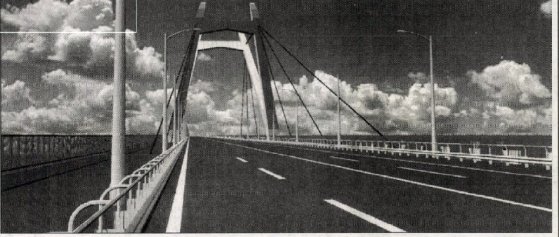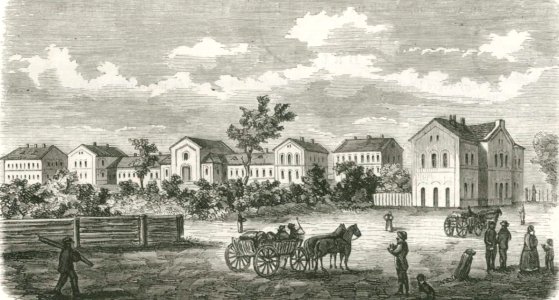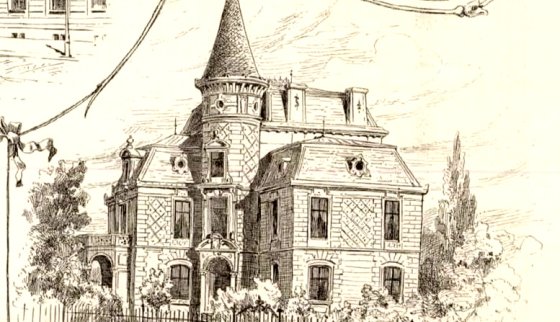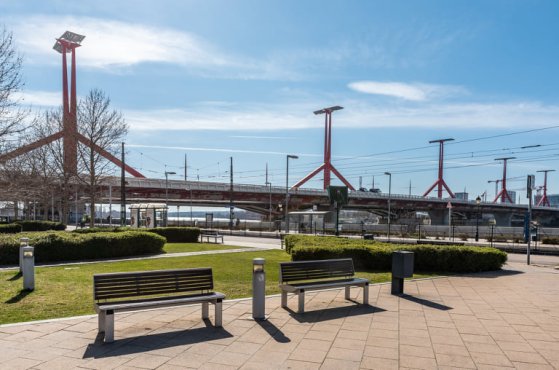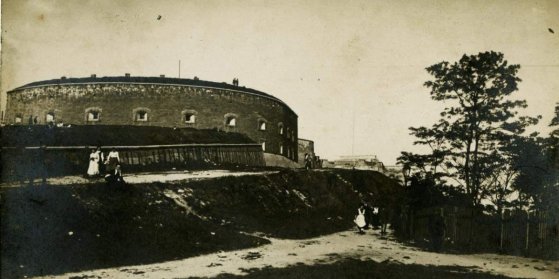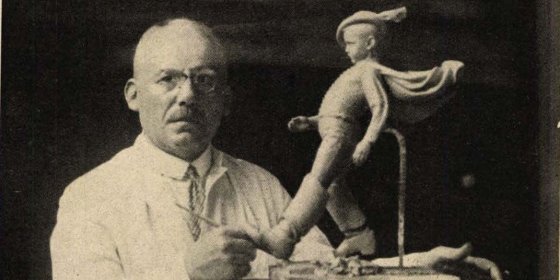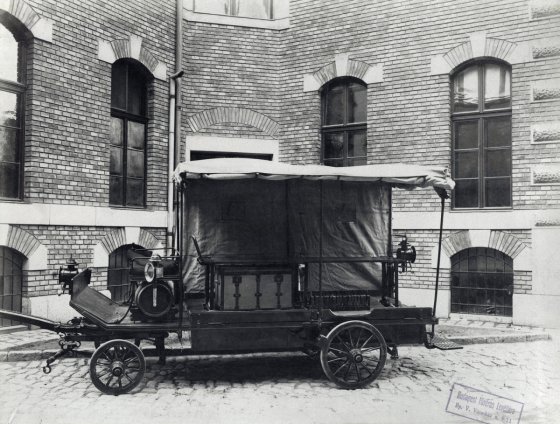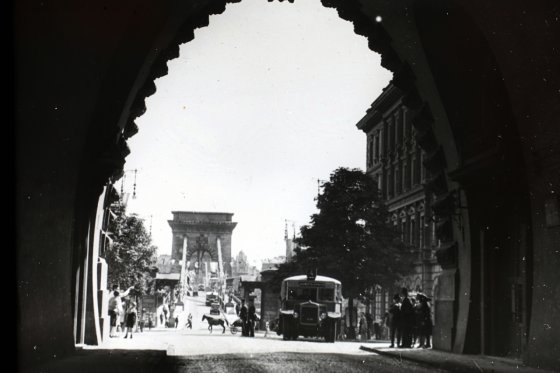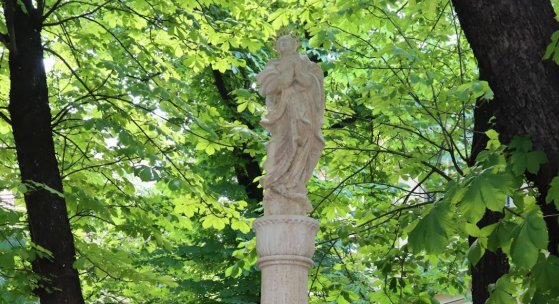 The „intertwined history” of the bridges and the city of Budapest
Which ideas and events have shaped the fate of bridges of Budapest and the cityscape? Alongside many other interesting facts, this question is also answered this newly published book by the Budapest City Archives, which introduces the history of bridges in Budapest.
The „intertwined history” of the bridges and the city of Budapest
Which ideas and events have shaped the fate of bridges of Budapest and the cityscape? Alongside many other interesting facts, this question is also answered this newly published book by the Budapest City Archives, which introduces the history of bridges in Budapest.
Budapest
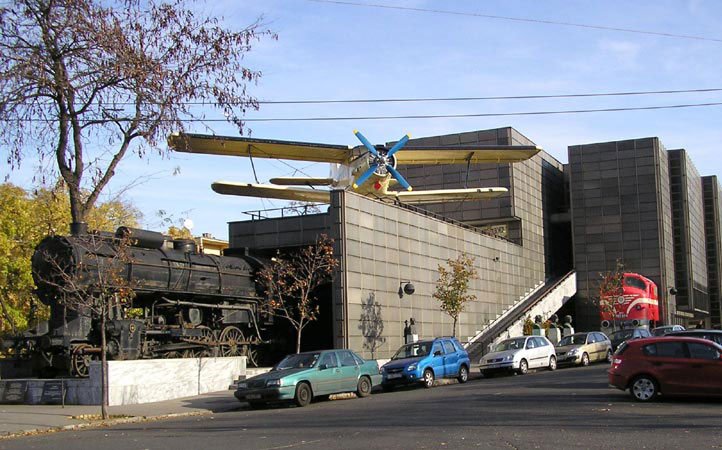 Thirty-five years ago, the newly built wing of the Museum of Transport was handed over
Thirty-five years ago, the newly built wing of the Museum of Transport was handed over
June 6, 2022 at 11:00 AM
A major event in the life of the Museum of Transport took place 35 years ago, after 8 years of construction, the new wing of the building was handed over. Although the museum's severe lack of space was alleviated, the new wing, which was modern in the era, did not solve all the problems.
A plan made 150 years ago for the development of Pest - A special drawing of the Eskü Square Bridge
June 5, 2022 at 9:30 AM
150 years ago, there was no unified Budapest, but there was already a unified plan for the development of the future capital.
The imposing Baroque Hall of the Museum of Fine Arts has opened
June 3, 2022 at 4:30 PM
In addition to the Renaissance Hall and the Romanian Hall, the almost renovated Baroque Hall of almost 800 square meters will also be available to the public from tomorrow. The last three large museum squares displaying and stylizing architectural styles were last opened simultaneously for 80 years.
Nearly two-thirds of entrepreneurs in the capital are opposed to the final closure of the lower embankment in Pest
June 3, 2022 at 11:00 AM
The majority of businesses in Budapest do not agree with the final closure of the section of the lower embankment of Pest between Chain bridge and Erzsébet Bridge in front of car traffic. According to a survey by the Budapest Chamber of Commerce and Industry, this may hinder the supply of the population, businesses and the general public in the region.
Wells, springs, baths in the 12th district: exhibition opened on the role of water in the Hegyvidék Local History Collection
June 3, 2022 at 8:00 AM
Already in the time of King Matthias, the Hegyvidék wells provided water to the Buda Castle, but Queen Elizabeth and Palatine Joseph also drank water coming from Svábhegy - revealed at the new exhibition on the relationship between Hegyvidék and the water, which opened on Wednesday in the building of the Hegyvidék Local History Collection next to the Horse Railway Cultural and Event Centre.
The chairlift will restart over the weekend
June 2, 2022 at 6:00 PM
From 4 June, the Zugliget chairlift will be open again, its one-month overhaul has been completed.
Gift of Franz Joseph - the statue of Miklós Zrínyi and Gábor Bethlen was inaugurated on Kodály Körönd 120 years ago
June 2, 2022 at 3:00 PM
King Franz Joseph decided 125 years ago to donate ten statues to the nation, and he himself would cover the costs of making public works of art that would depict the famous personalities of the Hungarians. The first two of these monuments were inaugurated 120 years ago on the Kodály Körönd, but today only the first of the statues of Miklós Zrínyi and Gábor Bethlen can be seen in its original location. On the occasion of the anniversary, we followed the fate of the statues of the Kodály Körönd in the last century.
Rubik's cube, Sphere, self-driving car - Exhibition presents the last 240 years of the Technical University
June 1, 2022 at 4:00 PM
The exhibition opened in the new visitor center of BME presents the activities of the Technical University, its world-class results, historical curiosities and the inventions of famous technical students. Those interested can check out the self-driving model car, the glass concrete, the small satellite, but they can also learn about drone development. They can also encounter relics such as the Rubik's Cube, the hologram, the Sphere or the rector's chain.
The Wall of the Deaf Olympic Champions was inaugurated in the Olympic Park
June 1, 2022 at 1:00 PM
A wall containing the names of 62 Hungarian hearing-impaired athletes has been placed in the downtown Olympic Park.
The world of modern architecture is revealed - PestBuda visited the Walter Rózsi Villa
May 31, 2022 at 9:00 AM
The new exhibition building of the Hungarian Museum of Architecture and Monument Protection Documentation Centre is in fact an exhibition object in itself. The institution has not had its own exhibition space for more than half a century, but now it has got a truly authentic one: a modern villa where visitors can not only get information about this style from wall texts and pictures, but also perceive its features in the space.
Only a house around the corner - An important place in the cultural history of Hungary on Üllői Road
May 30, 2022 at 2:00 PM
The residential house at 17 Üllői Road, on the corner of Erkel Street, does not stand out from its surroundings, it has no special decorations, it is proportionate and simple. Yet it is important and worth presenting because it was the home and meeting place of prominent personalities who had a tremendous impact on Hungarian literature, theatrical life, fine arts, and architecture.
The Hidden Treasure of Országház Street - A ceremonial hall with an adventurous story
May 29, 2022 at 9:00 AM
Walking in the Buda Castle, between the one- and two-storey houses of the narrow Országház Street, we would not even think that one of them hides a huge ceremonial hall. Although it is actually logical, as the name of the street already suggests that the greatest lords of the country once appeared here, and a representative hall was built for them. The life of the adventurous room took a turning point at the end of May 1929, as it was restored to its old glory after decades of neglect.
Masterpieces of tomb art on Fiumei Road - The graveyard that is known as a sculpture park
May 28, 2022 at 9:00 AM
The Fiumei Road Cemetery deserves special attention not only as a resting place for the country's greats, but also the sculptures and works of art belonging to the tombs are invaluable. From now on, visitors can use their phones to get to know them more thoroughly: they can read about the most outstanding sculptures and their creators with the help of a QR code.
A new cave was found in Buda
May 27, 2022 at 4:00 PM
A sidewalk sank on a section of the Lower Turkish Road in the 2nd district, revealing cracks and a cave hiding underground.
The Nagy Kristóf House was a real business centre in contemporary Pest
May 26, 2022 at 9:00 AM
The former house at 6 Váci Street is named after the huge statue of St. Christopher of the pharmacy in it, after which the area in front of the building was called Kristóf Square. However, according to the plans of József Hild, the building, which was expanded to two and then three floors, housed several other shops in addition to the pharmacy, including the fashion store of the clothing retailer Jakab Rothberger, which also won the title of imperial and royal court supplier.
A demolition application was filed for the Márványmenyasszony building
May 25, 2022 at 2:00 PM
The temporary protection ordered last year for the building of the legendary district I restaurant has recently expired, so on 24 May, an application was submitted for the demolition and the construction of a new residential building. Although the building has been rebuilt several times over the years, the cultural and historical significance of the Márványmenyasszony restaurant, founded in 1793, is given by the fact that it housed the wedding of István Széchenyi in 1836 and Miklós Wesselényi in 1845.
Farewell to the iconic tree of Deák Square - The fallen pine is cut down
May 24, 2022 at 7:30 PM
They cut out the iconic tree of Deák Square, the Himalayan silk pine leaning over the benches. The fallen tree was a favorite meeting place for many, and since the people of Budapest were attached to it, Főkert also said a sensitive goodbye to it on its website. It has been said that it cannot be transplanted or supported, there is no other option but to cut it down, as the popular tree is accident-prone.
A statue of the Polish poet Adam Mickiewicz was erected in Óbuda
May 24, 2022 at 6:00 PM
The statue of the Polish poet Adam Mickiewicz was inaugurated in the park named after him in Óbuda. It was said at the ceremony that this is one example of Polish-Hungarian friendship, as while Sándor Petőfi has a statue in Warsaw and a street named after him, one of the greatest figures in Polish literature, Mickiewicz, has now been erected in Budapest.
It could have been like that - A hundred-year-old plan for the Museum of Ethnography
May 24, 2022 at 9:00 AM
The new building of the Museum of Ethnography in the Városliget was ceremoniously handed over on Sunday. It is the first headquarters of the institution that was built for museum purposes during its hundred and fifty years of existence, although plans have been made for it earlier. Nearly a hundred years ago, in 1923, a tender was held for which various plans were submitted.
The Lutheran church in Kispest is 95 years old
May 22, 2022 at 9:00 AM
The name of the Templom (Church) Square in Kispest is eloquent, as three denominations also built their churches in this beautiful place: the Catholic, the Reformed and the Lutheran. The latter is the newest, although it is no longer young, since it was inaugurated on 22 May 1927, just ninety-five years ago. The special shape of its tower faithfully reflects the approach of the age of its construction, and its interior reflects Lutheran traditions.
Can the Aquincum Bridge be car-free? - Only after the construction of the next section of the M0 will there be a new Danube bridge between Óbuda and Újpest
May 21, 2022 at 1:00 PM
Once again, the issue of the Aquincum Bridge is on the agenda, and the capital is asking the public for their opinion on what the new Danube crossing should look like and between which areas should it create transport connections. Although its construction is not expected in the near future, as it is conditional on the construction of the section of the M0 motorway between roads 10 and 11, and it is also preceded by the Galvani Bridge, but a suggestion has already been debated: alternatives include a plan of a car-free bridge.
Trains departing from the 155-year-old Józsefváros railway station connected Losonc to Budapest
May 19, 2022 at 1:00 PM
The Józsefváros railway station, the third of Budapest's railway stations, was originally built for a private railway that later went bankrupt. The company was taken over by the state, and this decision brought about significant changes in Hungarian transport policy.
Medieval castles inspired the former Fackh Villa on Andrássy Avenue
May 18, 2022 at 4:00 PM
It was damaged in World War II, so one of the charming villas on Andrássy Avenue was demolished, which was built as the family house of the director of the Western Railway company in the early 1880s. The building was bought by the Hungarian state at the beginning of the 20th century, which later handed it over to a female monastic order, so it is not surprising that a chapel was built there at that time. After the war, the decision-makers did not spare the villa, building a modern residential house in its place.
Plans were already made for today's Rákóczi Bridge 50 years ago
May 15, 2022 at 9:00 AM
A bridge was designed in the 1970s to replace the former Lágymányosi, now Rákóczi Bridge, and a tender was also announced for the task. The winning plan would have been a concrete bridge, but ideas later changed about both the structure and the role of the bridge, so it was finally built only decades later, in a completely different form. The results of the first competition were presented to the general public 50 years ago, in May 1972.
Fortress over the city - The true history of the Citadel and common misconceptions
May 14, 2022 at 11:00 AM
A foreign tourist may not even believe that Gellért Hill was not created by human hands. Towering in the middle of the city, it offers stunning views, so the idea that it was built for tourism may be obvious. Yet it is a gift of nature, and the view could be used not only for pleasure but also for military purposes. This justified the construction of a fortress on the hilltop called the Citadel. The building will be completely reborn thanks to the Várkapitányság, we now have the opportunity to see the work in progress.
Ede Telcs, born 150 years ago, created masterpieces in various areas of sculpture
May 13, 2022 at 2:00 PM
Ede Telcs is an outstanding figure in Hungarian sculpture, and his works in Budapest include representative public monument, tombstone and architectural sculpture. His works adorning the Hungarian capital were mostly placed in City Park and the National Graveyard on Fiumei Road, as well as in the city centre. His work is intertwined with the life of the famous personalities, mainly with the architect Ignác Alpár, of Budapest which was developing into a world city.
We can count on paramedics in Budapest for 135 years - The first ambulances were still drawn by horses
May 10, 2022 at 9:00 AM
We can count on the help of paramedics in Budapest for 135 years now. The Budapest Volunteer Ambulance Association started its operation on 10 May 1887 in today's Szent István Square, but soon after, they were able to move into their new headquarters on Markó Street. The paramedics initially rode in horse-drawn carriages, but in 1902, 120 years ago, they already rushed in an electric car to help those in trouble.
Colourful memento about a brilliant architect - The Postal Palace became the main work of Gyula Sándy
May 8, 2022 at 12:00 PM
Finding and viewing pieces of the architectural heritage of a city with a long history is an eternal tourist hit. Budapest stands out in this area mostly with the legacy of dualism and the two world wars: almost everyone have encountered the names of Miklós Ybl, Imre Steindl or Ödön Lechner, but if we dig deeper, it is impossible to list how many undeservedly lesser-known talents contributed to the decoration of the Hungarian capital. The building of the Buda Postal Palace, which adorns the south-western side of Széll Kálmán Square, is also connected to such a genius: a remarkable volume came out this year about Gyula Sándy's life and work, both from a professional and a layman's point of view.
The first Zero Kilometre Stone was placed in Clark Ádám Square 90 years ago
May 7, 2022 at 10:00 AM
All roads lead to the Chain Bridge. This saying is true in that the length of the main roads starting from Budapest is calculated in kilometres from here, the Chain Bridge, more precisely from Clark Ádám Square on the Buda side. To mark this, the first 0-kilometre stone was inaugurated here on 7 May 1932, 90 years ago.
The restored Immaculata statue in Krisztinaváros is back to its place - its original was erected 320 years ago
May 6, 2022 at 8:00 PM
Another sculpture with a long history was renewed in the capital: the Immaculata statue in Krisztinaváros, erected 320 years ago in 1702 - the oldest public sculpture in Budapest - has been replaced by a copy since 1928, and in the meantime this work has also needed to be restored. The work was carried out at the Department of Restoration of the Hungarian University of Fine Arts recently, and yesterday the sculpture was placed at the Krisztina Square erection site.
More articles
 The „intertwined history” of the bridges and the city of Budapest
Which ideas and events have shaped the fate of bridges of Budapest and the cityscape? Alongside many other interesting facts, this question is also answered this newly published book by the Budapest City Archives, which introduces the history of bridges in Budapest.
The „intertwined history” of the bridges and the city of Budapest
Which ideas and events have shaped the fate of bridges of Budapest and the cityscape? Alongside many other interesting facts, this question is also answered this newly published book by the Budapest City Archives, which introduces the history of bridges in Budapest.
 The Bridge Report, which brought a turning point in the history of Budapest
A travel report that changed the history of Pest and Buda, as well as Hungary. The little book contributed to the change of half a thousand years of legal customs and the implementation of an investment of unprecedented size and technical quality. This book was The Bridge Report [Hídjelentés in Hungarian].
The Bridge Report, which brought a turning point in the history of Budapest
A travel report that changed the history of Pest and Buda, as well as Hungary. The little book contributed to the change of half a thousand years of legal customs and the implementation of an investment of unprecedented size and technical quality. This book was The Bridge Report [Hídjelentés in Hungarian].
 Drama on the university wall - The heroic monument was planned 95 years ago
In the constant hustle and bustle of the Egyetem Square in Pest, the students may not even notice the monument that decorates the short section of wall between the church and the central building of ELTE. However, it commemorates their predecessors, the heroes who fought for their country in World War I, and those who heroically helped them. The first design of the dramatically collapsing soldier was born in 1928, ninety-five years ago.
Drama on the university wall - The heroic monument was planned 95 years ago
In the constant hustle and bustle of the Egyetem Square in Pest, the students may not even notice the monument that decorates the short section of wall between the church and the central building of ELTE. However, it commemorates their predecessors, the heroes who fought for their country in World War I, and those who heroically helped them. The first design of the dramatically collapsing soldier was born in 1928, ninety-five years ago.

